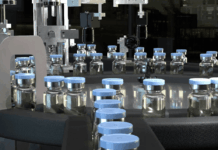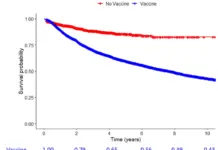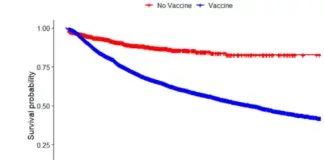
By Morgan Statt, guest author.
Did you know that humans make up only 0.01% of the Earth’s biomass? Despite this infinitesimally small number, researchers estimate that we’ve had a much greater impact – and not in a good way. Since the dawn of human civilization, we can now take responsibility for the destruction of 83% of wild mammals, 50% of plants, and 80% of marine life.
Our destructive behavior can likely be attributed to the consumer decisions we’re making on a daily basis. Products on the market that are touted as safe for use are actually doing more harm than good to both our bodies and the environment. But thankfully, we can start today to bring about positive change. Avoid these three harmful ingredients found in common products to protect both yourself and the environment in the years to come.
- Oxybenzone in sunscreen
Oxybenzone is an organic compound found in 65% of non-mineral sunscreens, yet it isn’t the safest for our bodies or the environment. In fact, the state of Hawaii recently passed legislation that will ban sunscreens containing oxybenzone by 2021, citing the compound as a major factor in the destruction of coral reefs.
Multiple studies have also linked oxybenzone to a wide range of human health risks, including altered birth weight, developmental concerns and even a reduction in male fertility. The downside, however, is that oxybenzone is one of the most effective chemicals for blocking UV rays.
Today, the FDA holds sunscreen to the same standards as over-the-counter medications, which critics point out has led to a stalling of innovation and a lack of safer ingredients. The agency attempted to make strides in 2014 with the Sunscreen Innovation Act, but new ingredients still haven’t been approved since the 1990s. With the safety of ingredients like oxybenzone finally being addressed, conversation surrounding the federal classification of sunscreen will likely continue in the coming years.
- Talcum powder in hygiene products
Derived from the talc mineral, talcum powder is a common ingredient in hygiene products like baby powder, deodorant and lotions because of its ability to wick away moisture. However, studies dating back to the 1970s have linked the common ingredient to a higher risk of ovarian cancer. Talcum powder can also contain asbestos fibers, thus associating its use with mesothelioma and lung cancer.
Family company Johnson & Johnson continues to make headlines for its talc-based Baby Powder and Shower-to-Shower products. Thousands of women have sued the global corporation, claiming that long-term use of these talc-based products led to their ovarian cancer diagnoses. Six out of nine high-profile verdicts have sided with the plaintiffs, and we should expect to see more court decisions in the coming years.
Despite regulating talc in food products, the FDA has no regulations in place for talcum powder in cosmetics. The European Union, on the other hand, completely bans talcum powder for use as an ingredient.
Health risks are only part of the worry with talcum powder. Reckless mining for the mineral has also caused environmental harm by devastating local wildlife. In India, for example, destructive talc mining practices have spilled into areas of the country focused on protecting endangered tigers.
Additional Information: Talcum baby powder and ovarian cancel lawsuits
Phthalates in medications
We’ve all heard the health risks of various chemicals in plastic products. Just take a look at any reusable water bottle for sale and there’s a good chance you’ll see “BPA-free” advertised on the label. But, you should also be on the lookout for phthalates in products such as shower curtains, food & beverage containers, and even medications. Studies have linked this chemical to human health risks including hormone disruption, birth defects, infertility, and cancer. Certain animal species have also experienced hormone disruption linked to phthalate exposure, and the chemical is also believed to be a factor in the decline of reptile species around the world.
We take oral medications to treat illness and prevent health issues, but the enteric coating used to prevent the medicine from disintegrating in our stomachs can actually be made from these harmful phthalates. Common drugs that contain phthalate-based enteric coatings include aspirin, SSRI antidepressants, and even dietary supplements.
Similar to talcum powder, there is no federal ban in place for the use of phthalates in consumer goods. The FDA and the U.S. Department of Health and Human Services have published information recommending that phthalates DBP and DEHP be avoided as excipients, or inactive substances, in prescription and over-the-counter drugs. However, these recommendations are not legally enforceable for the pharmaceutical industry to follow.
Morgan Statt is a health & safety investigator who writes about a number of consumer issues including product safety and trending health news. In her free time, she enjoys supporting local businesses that share in her passion for food and exploring the nearby hiking trails. Follow her on Twitter @morganstatt.
Disclaimer: We at Prepare for Change (PFC) bring you information that is not offered by the mainstream news, and therefore may seem controversial. The opinions, views, statements, and/or information we present are not necessarily promoted, endorsed, espoused, or agreed to by Prepare for Change, its leadership Council, members, those who work with PFC, or those who read its content. However, they are hopefully provocative. Please use discernment! Use logical thinking, your own intuition and your own connection with Source, Spirit and Natural Laws to help you determine what is true and what is not. By sharing information and seeding dialogue, it is our goal to raise consciousness and awareness of higher truths to free us from enslavement of the matrix in this material realm.
 EN
EN FR
FR


























